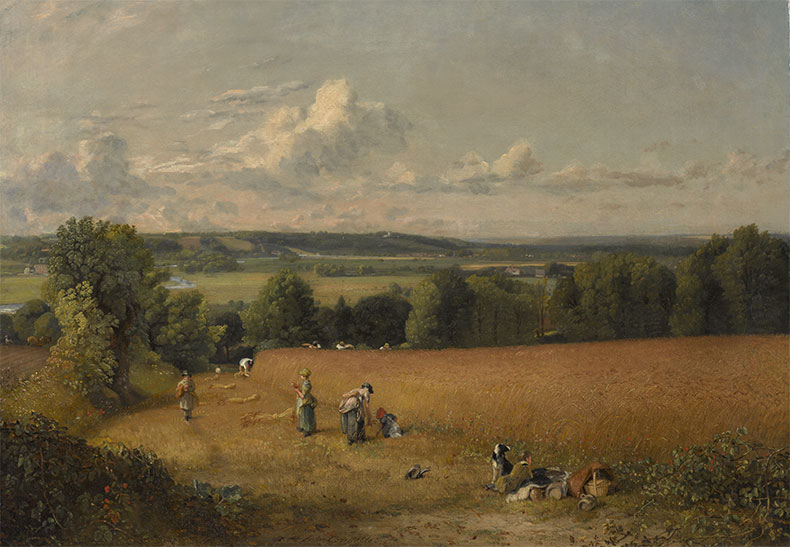 ‘Four things to see this week’ is sponsored by Bloomberg Connects, the free arts and culture app. Bloomberg Connects lets you access museums, galleries and cultural spaces around the world on demand. Download the app here to access digital guides and explore a variety of content.
‘Four things to see this week’ is sponsored by Bloomberg Connects, the free arts and culture app. Bloomberg Connects lets you access museums, galleries and cultural spaces around the world on demand. Download the app here to access digital guides and explore a variety of content.
Each week we bring you four of the most interesting objects from the world’s museums, galleries and art institutions, hand-picked to mark significant moments in the calendar.
In the northern hemisphere, the autumn equinox falls on 22 or 23 September. This is the moment when the sun is directly above the equator, meaning that day and night are of equal length. This annual marker heralds the arrival of falling leaves, chillier days, a longer coat and – before we know it – a hat and scarf.
In Zoroastrianism, one of the world’s oldest organised religions, it marks the beginning of Jashn-e Mehregan, the festival of sharing or love, while in Judaism, Rosh Hashanah or Jewish New Year is celebrated on a new moon close to this equinox. In Japan the equinox is a public holiday and in the United Kingdom, harvest festival – when thanks is given for the crops produced over the summer and surplus produce given away to those in need – is celebrated on the closest full moon.
For centuries the arrival of autumn has provided rich inspiration for artists across the globe. Here we take a look at four works of art that celebrate the changing of the seasons.
Plants and Insects in Autumn (c. 12th century), Li Di. National Palace Museum, Taipei

1. Plants and insects in Autumn (c. 12th century), Li Di
National Palace Museum, Taipei
In this exquisite painting Li Di, a Chinese imperial court painter during the Song Dynasty, zooms in on the insects that inhabit the autumn leaves. A praying mantis is shown with its forelegs outstretched while its prey, a large beetle bearing no small resemblance to a bat, flies away. This is an entomological variation on the traditional hunting scene and perhaps a glimpse at the ‘hunger gap’ of winter to come. Click here to find out more.
Autumn Foliage (1915), Tom Thomson. Art Gallery of Ontario. Photo: © AGO. 852.

2. Autumn Foliage (1915), Tom Thomson
Art Gallery of Ontario
As the hours of sunlight contract and the temperature cools, the chlorophyll in the leaves of deciduous trees begins to break down, turning what was once green to yellow, orange and red. In this work the Canadian painter Tom Thomson depicts the archetypal autumn scene of changing leaves as a vivid blur of colour. Click here to find out more.
The Wheat Field (1815), John Constable. Clark Art Institute, Williamstown

3. The Wheat Field (1815), John Constable
Clark Art Institute, Williamstown
This bucolic scene shows workers harvesting wheat at the end of the summer of 1815, during which time Constable spent most of his days working en plein air. In a letter to his fiancée from this period he wrote, ‘I live almost wholly in the fields and see nobody but the harvest men.’ Click here to find out more on the Bloomberg Connects app.
Still Life with Apples and Pumpkins (1885), Vincent van Gogh. Kröller-Müller Museum, Otterlo. Photo: Rick Klein Gotink

4. Still Life with Apples and Pumpkins (1885), Vincent van Gogh
Kröller-Müller Museum, Otterlo
One of Van Gogh’s less well-known works, this painting demonstrates autumn’s bounty in the form of a shadowy still life of apples and pumpkins. Using a technique he described as ‘modelling with different colours’, he applies many layers of impasto to convey the thick and bumpy skins of the squashes, making them seem almost three dimensional. Click here to find out more.
Download now
![]() ‘Four things to see this week’ is sponsored by Bloomberg Connects, the free arts and culture app. Bloomberg Connects lets you access museums, galleries and cultural spaces around the world on demand. Download the app here to access digital guides and explore a variety of content or scan the QR code.
‘Four things to see this week’ is sponsored by Bloomberg Connects, the free arts and culture app. Bloomberg Connects lets you access museums, galleries and cultural spaces around the world on demand. Download the app here to access digital guides and explore a variety of content or scan the QR code.



